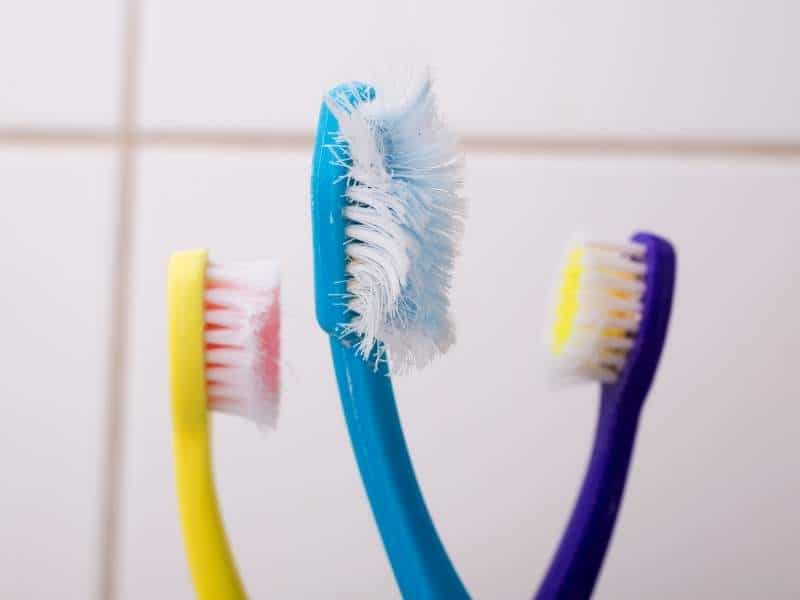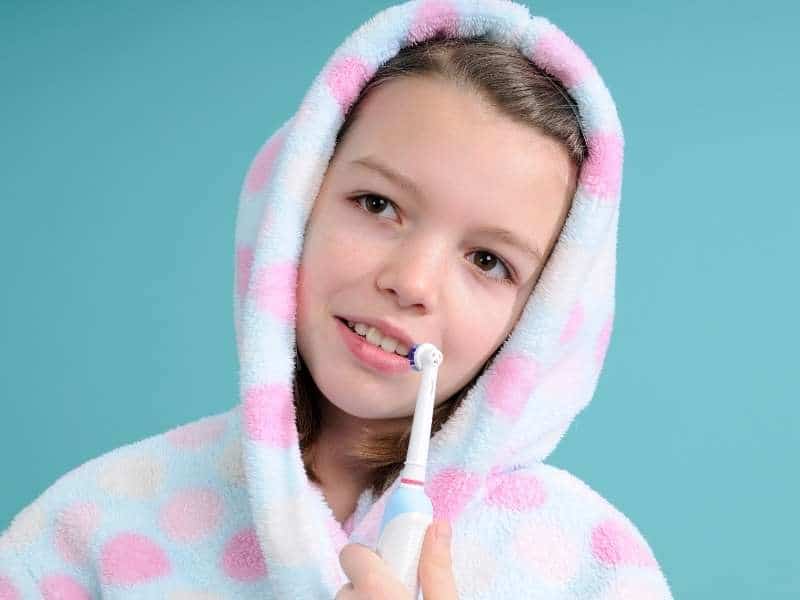As dentists in Hamilton for many years now, we’ve been asked all sorts of questions about dental care including a lot of questions about toothbrushes. Given the interest, we thought we’d answer the most frequently asked questions we’ve received about toothbrushes to fill those holes (no pun intended).
How often should you get a new toothbrush?
On average, we typically advise our patients to change their toothbrush every 3 – 4 months when brushing the correct way, twice a day. If your brushing technique is a bit aggressive or you’re brushing more than twice a day, your toothbrush will inevitably wear quicker.
You can usually tell that it’s time to change your toothbrush by simply looking at it as well. If the bristles have started to bend, spray or fray – it typically means that they’re not going to be cleaning your teeth as effectively and it’s time for a replacement. Some toothbrushes also have colour indicator contours that will fade, letting you know when it’s time to change.
We typically recommend you always have a spare one in the cabinet for every member of the family, just so when a change is needed, you aren’t delayed by having to go out and get one.

How much toothpaste should you use on a toothbrush?
The average adult only needs a pea-sized amount of toothpaste on their toothbrush for a sufficient clean. A young child only needs about half this amount and a baby/infant only needs a thin streak of toothpaste.
This question arises more often than not, probably due to the way toothpaste is sometimes advertised, be it in photos, online or otherwise. It often gets depicted with a generous amount of toothpaste lathered across the whole toothbrush which is much more than required.
The good news is that if you’re using an electric toothbrush with a round brush head, which is quite common these days, you’ll be hard-pressed to fit more than a pea-sized amount on your toothbrush anyway.
Why use soft bristle toothbrushes?
Most dentists (including ourselves) will recommend that people use soft bristle toothbrushes and almost immediately upon doing so, people ask why. Soft bristle toothbrushes are recommended because they are able to remove bacteria and plaque without damaging the teeth or surrounding gums. We would even go a step further by recommending toothbrushes with bristles that have rounded tips.
When using a toothbrush with firm bristles or even medium bristles means you run the risk of wearing down your tooth enamel, gums and the root surface.
When can a child use an electric toothbrush?
There’s a variety of opinions about when children can or should start using an electric toothbrush. While there are some electric toothbrushes available for infants with milk teeth just emerging, we tend to say that 3 years old is an appropriate age to introduce kids to their first electric toothbrush.
At 3 years old most children will have all their milk teeth ready to be cleaned on a daily basis and will be able to comprehend instructions and guidance a little bit better. They are also less likely to be frightened by the noise and feel of an electric toothbrush, the experience of which could then make future toothbrushing a challenging affair.
It’s also a good age to help kids understand the importance of good dental practice and an electric toothbrush will more than likely ensure they do a better job than they might otherwise do with a regular toothbrush.

Is an electric toothbrush better for receding gums?
Receding gums are an issue that concerns many people and is caused by a number of factors like poor diet, bacterial gum disease and even your genes can play a role. Another major cause, however, is the overly aggressive brushing of teeth.
Some models of electric toothbrushes can help with respect to this as they have an indicator light that turns on when it detects you are brushing too hard. Regular toothbrushes, of course, don’t have such features so you have to use your own judgement which can be a little difficult.
If you have perfect toothbrushing technique already then this won’t matter but if you want to make it a little easier for yourself than electric toothbrushes with indicator lights can certainly help.
When was the toothbrush invented?
Funnily enough, we’ve had plenty of curiously-minded patients who have asked this question. It’s actually a very interesting subject and dates back to as far as 3,000 BC when ‘chew sticks’ (twigs with frayed ends) were used to clean teeth by the Ancient Egyptians.
The first bristled toothbrush which most closely resembles what we use today was used by the Chinese from around 619 AD and was made from hog bristles. Mass production of toothbrushes, however, didn’t begin until 1780 by an English entrepreneur called William Addis. Animal bristles were still used by these up until the 1930s when DuPont introduced synthetic bristles which are still used today.
Share your toothbrush knowledge!
So there you have it! Some of the most frequently asked toothbrushes questions answered. We hope you’ve found it informative and interesting and encourage you to share your newfound toothbrush knowledge with your friends and family. And don’t forget, no matter how good your toothbrushing technique is, there’s still no substitute for regular dental check-ups and professional teeth cleaning as part of your overall dental care and health.
Site map
Services
Contact Us
T: 07 854 8905
E: info@thehdc.co.nz
3/111 Thomas Road,
Rototuna, Hamilton
copyright © 2025 Hamilton Dental Centre | Credit Terms | Web development by Digital Hothouse

